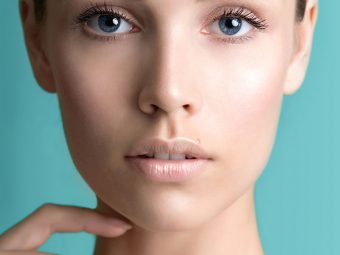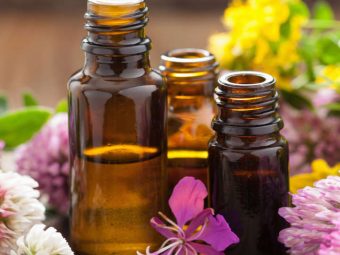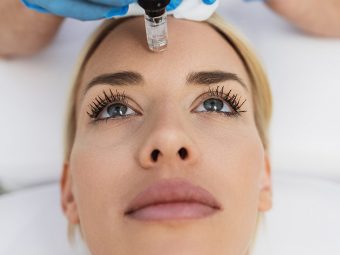Tallow For Skin Care: The Complete Guide
Don’t let this fatty ingredient fool you into thinking it’s all bad and no good!

Tallow is fast becoming popular in the skin care industry. It is rendered beef fat and has the most beneficial nutrients when extracted from 100% grass-fed beef. You may use tallow for skin care as it helps keep it young, healthy, and smooth. If stored in a sealed container, it can be preserved for long periods, even without refrigeration.
If you are not aware of the skin benefits of tallow, you have come to the right place. This article will help you know more about tallow, its nutritional profile, skin benefits, and potential side effects. Scroll down.
In This Article
What Is Tallow?
Tallow is extracted fat, mainly beef fat. Raw fat is rendered to tallow by melting it. Tallow from 100% grass-fed beef has the most beneficial nutrients. It is composed of stearic acid (1). It is solid at room temperature but takes on an oily consistency after going through the cosmetic production processes. Tallow can be preserved for long periods without refrigeration if maintained in a sealed container.
Mutton Tallow Vs. Beef Tallow
Mutton tallow is derived from sheep whereas beef tallow is derived from beef. Both components are natural, shelf-stable goods. Though both are abundant in saturated fats, beef tallow is higher on the same. Mutton tallow, on the other hand, seems to have more vitamin E than beef tallow.
Tallow is most famous for its high oleic, palmitic, and stearic acid content. Beef tallow has more palmitic acid, while mutton tallow has more oleic and stearic acids.
Tallow contains the following fatty acids and nutrients:
1. Stearic And Oleic Acids (Omega-9): These are present in the skin’s protective outer layer and sebum. These help moisturize and soften the skin. They also have anti-inflammatory properties. Stearic acid also helps heal skin damage by improving its suppleness and elasticity. Oleic acid aids the penetration of the other active ingredients into the skin (2). However, some research suggests that oleic acid may also disrupt skin barrier function (2).
2. CLA (Conjugated Linolenic Acid): CLA has anti-inflammatory and antibacterial properties and may help treat various skin disorders. It may also help reduce wrinkles (3).
3. Palmitoleic Acid (Omega-7): Palmitoleic acid is another critical component of our skin. It has potent anti-inflammatory properties that promote wound healing (4).
4. Palmitic Acid: This acid protects the skin’s lipid barrier (5). It also makes the skin smoother.
5. Alpha-Linolenic (Omega-3) And Linoleic (Omega-6) Acids: These are optimally balanced in a nearly 1:1 ratio. These essential fatty acids contribute to the skin’s structural integrity and barrier function. They also may influence any inflammatory and immunological responses. These acids are also found to lighten skin pigmentation induced by UV radiation (6).
6. Vitamins:
- Vitamin A: It helps develop protein, elastic, and healthy skin cells. It also strengthens skin tissue and makes it firm and youthful. It also supports the daily replacement of skin cells (7).
- Vitamin D: It helps repair skin and protects skin from free radicals. It also may have photoprotective effects (8)
- Vitamin K: It helps improve skin tone and texture. It also may accelerate wound healing (9).
- Vitamin E: It repairs skin and reverses free radical damage (10). It also may moisturize skin.
This composition of tallow offers multiple skin benefits. We discuss them in the following section.
What Are The Benefits Of Tallow For Skin?
1. May Help Treat Dry Skin
The natural oils in tallow may help hydrate skin. They get absorbed quickly and reduce cellular dryness. They do not clog pores or make skin greasy. Tallow is suitable for both dry and oily skin types. However, research is limited in this regard.
Tallow’s effects last long, and it doesn’t have to be applied more than once a day.
2. May Make Skin Looking Younger
The vitamin E in tallow is very beneficial for aging skin. Its antioxidant properties protect the skin from UV exposure and reduce the associated damage (10). Tallow also fights free radical damage and may reduce the formation of fine lines and wrinkles. It also may make skin very soft with daily use.
Vitamin E has also been proven to protect collagen from breaking down (10).
3. May Be Good For Acne-Prone Skin
Tallow’s antibacterial, anti-inflammatory, and skin-repairing characteristics make it ideal for acne-prone skin. However, concrete research is lacking in this regard.
4. May Fight Skin Infections
The vitamin D in tallow may promote the production of anti-microbial peptide genes that helps fight viral skin infections (11). Grass-fed tallow contains CLA. CLA appears to have anti-cancer characteristics and may help reduce the risk of skin tumors (12).
5. May Be Compatible With Human Skin Cell Biology
Tallow may be compatible with our cells’ biochemistry. Tallow used for skin care has a saturated fat ratio of 50-55%, making it potentially more suitable for human skin.
These are the few important benefits of tallow. But you also must be aware of its side effects before you start to use it.
Using Tallow On Your Skin: Precautions And Side Effects
- Impurity Issues
The purity of animal parts which tallow is extracted from is an important consideration. The diet of such animals also plays a role in tallow purity. It is quite a challenge to know unless you are procuring tallow from an FDA-approved product.
- Not Cruelty-Free
Tallow is animal fat and is extracted from a dead animal. This can be off-putting for animal lovers. The demand for cruelty-free cosmetics is increasing, for ethical and environmental reasons.
- Unpleasant Odor
Though the fat itself has no odor, but part of the animal’s muscle and other tissue might enter the skin are mix during processing. This may make the finished product smell awful.
- Stability Issues
Tallow is not stable. It goes through many production procedures, including heating, before it is made available as a finished product. Hence, such products may lack consistency in color, appearance, and odor.
Tallow can be used for a variety of reasons. It can be used as a full-body moisturizer, face cream for anti-aging and anti-acne benefits, baby lotion, sunburn or nappy rash treatment, lip moisturizer, and fade scars and stretch marks. It is non-greasy, will not clog your pores, lasts a long time, and is all-natural. Tallow keeps your skin hydrated the whole day and needs to be applied once. However, there is relatively little study on its skin advantages. You may use tallow for skin care and see how it works. However, be careful of the potential side effects and consult a doctor before using.
Frequently Asked Questions
Is tallow good for lips?
Yes, it is good for lips as it helps moisturize lips and makes them soft and supple.
Is tallow good for hair?
Tallow is good for hair. The anti-inflammatory and antibacterial properties of tallow may help heal the scalp and reduce dandruff.
Key Takeaways
- Tallow is rendered beef fat that works wonders for skin care.
- Tallow’s natural oils may aid in skin hydration and can be used on dry and oily skin.
- It contains vitamin E, which has antioxidant properties that protect the skin from UV rays and fight the signs of aging.
- However, tallow has impurity and stability issues, a foul odor, and it is not cruelty-free.













